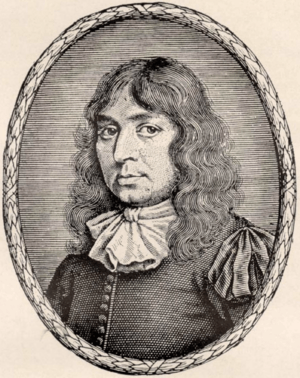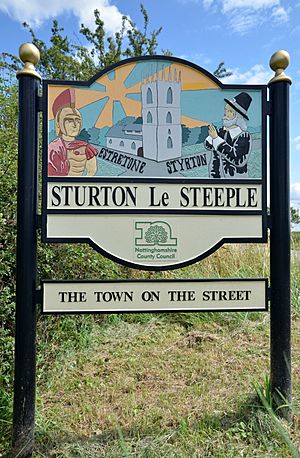John Smyth (English theologian) facts for kids
Quick facts for kids
John Smyth
|
|
|---|---|
 |
|
| Born | c. 1554 Sturton-le-Steeple, Nottinghamshire, England
|
| Died | c. 28 August 1612 (aged c. 57–58) |
| Alma mater | Christ's College, Cambridge |
| Occupation | Pastor |
| Signature | |
 |
|
John Smyth (born around 1554 – died around August 28, 1612) was an important English minister. He started as an Anglican priest. Later, he became a Baptist and then joined the Mennonites. John Smyth strongly believed in religious freedom for everyone.
Contents
Early Life and Education
John Smyth was likely the son of John Smyth, a farmer from Sturton-le-Steeple, Nottinghamshire. He went to school in Gainsborough. Later, he studied at Christ's College, Cambridge, where he became a teacher in 1594. In the same year, he became an Anglican priest in England.
His Ministry and New Ideas
John Smyth preached in the city of Lincoln from 1600 to 1602.
Leaving the Church of England
In 1607, he decided to leave the Church of England. He moved to Holland with Thomas Helwys and a small group of followers. There, they studied the Bible very carefully. At first, Smyth's beliefs were similar to his Anglican background. But over time, his ideas changed a lot.
Discovering Anabaptist Beliefs
In Holland, Smyth learned about Anabaptist ideas. He started to believe in certain principles. One main idea was believer's baptism by immersion. This means only adults or older children who choose to follow Jesus should be baptized. He was against infant baptism. He also believed the last Supper was a memorial meal, not a magical change of bread and wine.
The Differences of the Churches
In 1608, John Smyth wrote a book called The Differences of the Churches. In this book, he explained what he thought a true church should be like:
- Heartfelt Worship: Smyth believed that worship should come from the heart. He thought only the Bible should be used in church services. He also felt that praying, singing, and preaching should be spontaneous. He preferred to read the Bible in its original languages.
- Church Leaders: He suggested that a church should have two types of leaders: pastors and deacons. He also said that a church could have several pastors.
- Financial Support: Smyth thought that the church should only get money from its members. He believed the government should not support the church. This was to keep the government from controlling the church.
Forming the First Baptist Church
In 1609, Smyth and Thomas Helwys and their group in Holland became convinced about believer's baptism. They decided to form one of the very first Baptist churches. Smyth strongly believed that believer's baptism and a church formed by a special agreement were essential.
Since they had all been baptized as babies, they felt they needed to be baptized again. There was no other minister to do this. So, in 1609, Smyth baptized himself. This is why he was sometimes called "the Se-baptist," which means "one who baptizes himself." After baptizing himself, he then baptized Thomas Helwys and the rest of the church members.
A Forgery Story
There was a story that John Smyth was baptized in a river in 1606. This story was later found to be a forgery. It was made up when a Baptist church was being rebuilt in Crowle.
Joining the Mennonites
In February 1610, Smyth and some church members wrote to a Mennonite community. They wanted to join the Mennonite movement. Because of this, Thomas Helwys and some others decided to leave Smyth's church. Smyth and part of the church joined a Mennonite church. Helwys and his group returned to England. They started the first lasting Baptist church there in 1612. These churches were known as General Baptists. They believed that Jesus died for all people, not just a select few.
Death
John Smyth died in Amsterdam on August 28, 1612. He was about 57 or 58 years old.
See also
 In Spanish: John Smyth para niños
In Spanish: John Smyth para niños
- Baptists
- Believer's baptism
- Baptist offices


